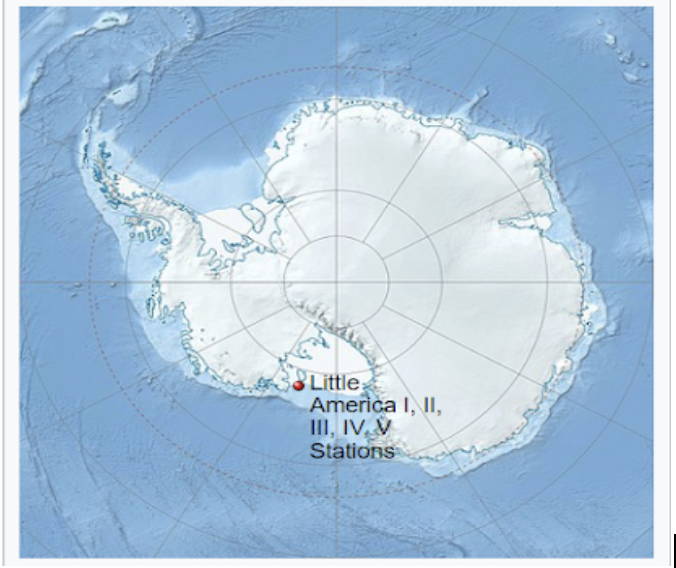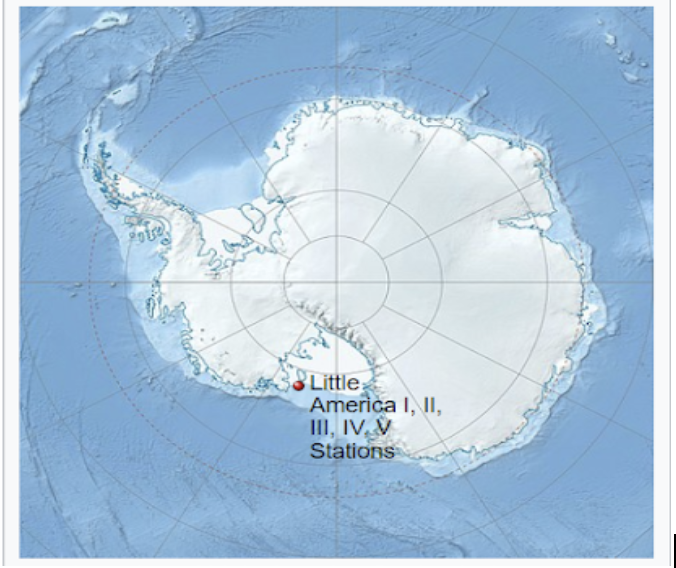Did you know that Antarctica, the world’s fifth largest continent, was discovered in 1820, 39 years after the planet Uranus?
Yes, you read it right – Antarctica was discovered 39 years after Uranus. In January 1773, Captain James Cook became the first recorded navigator to cross the Antarctic Circle. The continent was first sighted in January 1820, though the first person/group to have discovered the mainland is highly debated. This brings us to yet another important question – Why did Antarctica remain silent and secluded prior to its discovery in 1820?
For centuries, Antarctica has fascinated explorers who dreamed of reaching the southernmost point of the earth. Many brave adventurers have ventured into the frozen continent, facing hardships and perils along the way. Some have succeeded in their quests, while others have perished or vanished without a trace. Though the icy continent is believed to be remarkable wonder of snow, beauty, and splendour its remoteness and inhospitable weather make it difficult for life to thrive on the continent.
So, it is rather unbelievable when the United States of America suddenly decided to undertake a daring albeit a rather controversial military operation here – Operation High Jump.
Story of Antarctic’s Little America & The Visionary Leader who set it up – Admiral Richard E. Byrd
The celebrations around the second world war had not yet ended when the cold war began between the Western Allies and their former Soviet partner. The end of the world war also signalled the commencement of an atomic age, with the victorious countries wanting to acquire supplies of Uranium and other natural resources. Against this backdrop, Antarctica became a crucial potential supplier of natural resources with its vast mineral deposits amidst largely unexplored territories. Therefore, the United States sought to establish its presence in Antarctica and explore the icy continent using its naval and air assets and set up small bases to sustain the exploration activities.
One such exploration base in Antarctica was set up a US Navy officer and pioneer aviator Rear Admiral Richard E. Byrd Jr.
“Patience is what you need in the Antarctic. Wait-Give wind and tide a chance to change.”
Rear Admiral Richard E. Byrd
Richard Evelyn Byrd Jr. was an American Naval officer and explorer. He was the recipient of the Navy Cross, the second highest honour for valour in the United States. He was a pioneering American aviator, polar explorer, and organizer of polar logistics. He served as a Naval pilot in World War I and became interested in polar exploration after meeting Norwegian explorer Roald Amundsen. Aircraft flights in which he served as a navigator and expedition leader crossed the Atlantic Ocean, a segment of the Arctic Ocean, and a segment of the Antarctic Plateau. In 1929, he flew over the South pole with three companions, making him the first person to do so. He is also credited for discovering Mount Sidley, the largest dormant volcano in Antarctica.
But Byrd’s most famous contribution in Antarctica was the setting up of the series of exploration bases called Little America near the northeastern edge of Ross Ice Shelf near Kainan Bay – The first base in this series, Little America I was set up in 1929; Little America II came up in 1934, approximately 30 feet above the original base site; Little America III was established in 1940-41 however this base went adrift in 1963; Next came the 4th base of the series, Little America IV which was to be used as a base camp for Operation High Jump; The last base of the series was Little America V which was set up in 1956 as part of Operation Deep Freeze.

While each operation undertaken by Byrd’s team to set up an exploration base in Antarctic was challenging and filled with extreme danger, but till date the most controversial and remarkable remains the Operation HIGH JUMP.
Story of Operation High Jump
On August 26th, 1946, Admiral Chester Nimitz, the US Naval Operations Chief, announced that a massive combined military operation would be launched in Antarctica in December. This operation was officially titled as “The United States Navy Antarctic Developments Program”. It was a United States Navy (USN) operation to establish the Antarctic research base Little America IV.
The Naval contingent was also known as Task Force 68. The scientific and research elements were organized by Rear Admiral Byrd, Officer in charge, Task Force 68. It was led by Rear Admiral Ethan Erik Larson, USN, Commanding Officer, Task Force 68. And Rear Admiral Richard H. Cruzen commanded the naval contingent for the operation. The naval contingent included 4700 men, 13 ships, and 33 aircrafts, and a secret agenda that still sparks intrigue and speculation today.
Objectives & Mission of the Operation
According to the US navy’s reports, Operation High Jump was carried out to meet the following objectives-
- Training personnel and testing equipment in frigid conditions.
- Consolidating and extending the United States’ sovereignty over the largest practicable area of the Antarctic continent (publicly denied as a goal before the expedition ended).
- Determining the feasibility of establishing, maintaining, and utilizing bases in the Antarctic and investigating possible base sites.
- Developing techniques for establishing, maintaining, and utilizing air bases on ice, with particular attention to later applicability of such techniques to operations in interior Greenland, where conditions are comparable to those in the Antarctic.
- Amplifying existing stores of knowledge of electromagnetic, geological, geographic, hydrographic and meteorological propagation conditions in the area.
- Supplementary objectives of the Nanook expedition (a smaller equivalent conducted off eastern Greenland).
However, the Soviet Naval Journal describes this operation as “US measures in Antarctica testify that American military circles are seeking to subject the polar regions to their control and create military bases.”
Task Force 68 – The Naval Contingent That Led The Operation
Task Force 68 comprised three separate naval bases – each assigned a specific mission.
- Captain George J. Dufek commanded the Eastern Group, with Pine Island carrying three PBM Mariners.
- The Western Group, commanded by Captain Charles A. Bond included Currituck with three Mariners.
- The Central Group of Admiral Cruzen with the aircraft carrier USS Philippine Sea, with Byrd as the officer in charge, filled out the task force.
The operation included several well-equipped helicopters which served as the eyes of the fleet. They flew ahead of the icebreakers to search for clear passages through the ice. One helicopter was allotted to each icebreaker and one to the carrier Philippine Sea. The key aspect of the preparations was the construction of special platforms on the ships for the helicopters and many hours were spent practicing take offs and landing.
The Central Group was the command centre for the operation. Its ship broke through the ice with the help of the Coast Guard cutter Northwind. Northwind was critical to the mission as the thick ice would crack open a thin-skinned ship like a can opener. Norwegian trawlers reported the ice to be the heaviest in more than 40 years. A new navy cutter, Burton Island joined the mission later. Upon reaching the Ross Ice Shelf, the Central Group ships would disgorge the small aircraft, ice vehicles, supplies, tents, and sled dogs. Then the men would move inland to establish Little America IV, which would serve as the headquarters for Byrd and his six R4Ds.
Beyond the Blueprint- Uncovering the Journey
The first task was to establish the Little America IV base.
For this the contingent was armed with sophisticated equipment, detailed plans and necessary provisions like gloves, coats and snow boots to protect sled dogs’ paws. In fact, the ships also carried a Christmas tree and Santa Claus since they would be at sea on the 25th of December. While enroute to the site the sailors also carved thousands of pieces of bamboo and had orange flags attached to be used as a route and landing zone markers. The Little America IV base was located near the previous three bases.
Task two was to start once the base had been established. This was detailing an aircraft to photograph as much of Antarctica’s land surface as possible during the three-month operation.
Perils and Pitfalls of the Operation
There were many challenges associated with Operation High Jump. Though the lower temperature made the air denser and increased the helicopters’ efficiency still a 60-minute preparation time was required to heat up the fuel, oil, engine and remove any ice from the rotor blades prior to the mission. During the return journey of an HO3S-1 helicopter, its rotor blades became so coated with ice that the helicopter crashed several feet below the ship’s landing port. But Captain Dufek and the pilot were saved before freezing to death in the bitterly cold water.
One of the most tragic incidents occurred on the 30th of December 1946.
PBM-5 Mariner George 1’s launch was delayed for days by fog, snow squall and heavy seas. Finally, on December 26th it was launched and again on December 29th when the weather conditions cleared. Suddenly the weather took a turn and George 1 became involved in an “ice blink”. Pilot Ralph LeBlanc struck an object and tried to pull up but the fuel tank ripped open and the aircraft crashed in a fireball. Two crewmen were killed instantly when they were thrown through the propeller blades. Due to the harsh weather conditions, it was impossible to carry out any rescue mission for the next 13 days. Finally, a search plane spotted men and burned wreckage on the ground. The signal painted on the Marine’s wing indicated that three of the crewmen were dead. Since it was impossible to land in the area, messages were dropped which directed the survivors to make their way to the open water about 10 miles to the north. An aircraft marked the route with orange flags and then proceeded to parachute drop food, medicine and other supplies. The men successfully made it and were brought back to Pine Island but Pilot LeBlanc lost both of his badly burnt and frozen legs. On January 22, USS Philippine Sea lost an HO3S-1 helicopter which got caught in the string winds during take-off and crashed in the sea. Though the pilot was rescued it brought them face to face with the harsh challenges awaiting them in the frigid continent.
The operation also faced some political and diplomatic obstacles.
The United States was not the only country interested in Antarctica at the time. Several other nations, such as Britain, France, Norway, Chile, Argentina, and Australia, had claimed or occupied parts of the continent. Some of them were suspicious or hostile to the American presence and intentions in Antarctica. For instance, Chile and Argentina protested against the operation and sent their own expeditions to assert their sovereignty over the Antarctic Peninsula.
Enduring Legacy of Operation High Jump
Operation High Jump cannot be only viewed from a political and military lens. It was a scientific venture into the frigid continent. The enduring legacy of Operation High Jump lies in the fact that there are currently around 82 bases from 30 countries for scientific and exploratory reasons. Their valuable research has paved way into the many secrets of the snow-clad continent. It has also laid the ground for several treaties and international collaboration amongst different countries of the world. It has also made us realise the strength of the human mind that thrives to endure despite the sub-zero temperature levels of the continent and an expedition that challenged the limits of technology.
“I am hopeful that Antarctica in its symbolic robe of white will shine forth as a continent of peace as nations working together there in the cause of science set an example of international cooperation.”
Rear Admiral Richard E. Byrd

